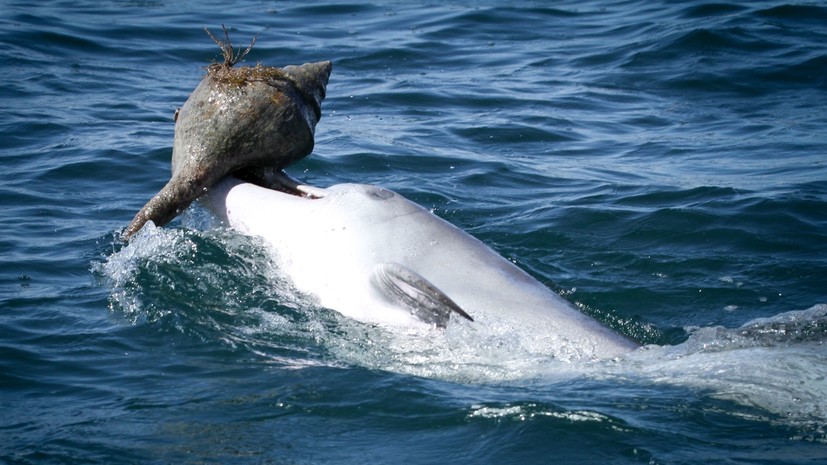An international team of marine biologists has found that bottlenose dolphins are able to learn new tactics for food extraction not only from their mother, but also from other members of the pack. This was reported in the journal Current Biology.
For over 35 years, researchers have observed dolphins in Shark Bay in Western Australia. Back in the mid-1990s, scientists discovered the first examples of a new food-extraction technique for these animals, which they called "shaking." Dolphins raised the shells of giant mollusks with prey hiding inside (usually fish) to the sea surface and shook them with their beaks, sending the contents to their mouths “like the last chips from the bottom of the bag,” the biologists noted.
- Scientists have discovered the ability to social learning in dolphins
Earlier, mother’s training of her cub was considered the only way to transfer food production techniques between generations of dolphins.
“As our study showed, dolphin feeding behavior skills are adopted among the members of the pack. This is an unexpected discovery, because dolphins and other representatives of the toothed whales, as a rule, follow the rule “repeat after the mother” to learn how to get food, ”said Sonya Wilde, one of the authors of the work, a researcher at Leeds University.
The experts came to this conclusion as a result of studying the records made during the expedition to the Shark Bay on a research vessel from 2007 to 2018. During this time, 5278 meetings with dolphin schools were recorded and 1035 individual bottlenose dolphins were identified. Researchers caught 19 dolphins behind the “shaking” of food, which demonstrated this method of hunting 42 times.
After a comprehensive analysis of the interaction of different communities of bottlenose dolphins, their genetic relationships and environmental influences, scientists came to the unequivocal conclusion that the skill of “shaking out” was acquired primarily as a result of observing some members of the pack over others. The acquisition of new skills outside the “mother-child” relationship has shown that dolphins have access to social learning, that is, the process of cognition as a result of studying the behavior of peers. It was previously believed that this type of training can only be used by higher primates and people.
“The fact that knowledge about the use of sea shells for fishing is transmitted in a circle of flocks, and not from mothers to offspring, emphasizes the similarity between cetaceans (a group including whales, dolphins and belugas) and higher primates in terms of the transfer of cultural behavior. Although cetaceans and higher primates evolved differently and live in different environments, they have a striking similarity. Both of them are long-lived mammals with a large brain volume, highly talented to be innovative and socially transmit patterns of behavior, ”said Michael Kryutzen, the initiator of the study, a scientist at the University of Zurich.
Some dolphins resorted to a new method of obtaining food more often than others, and this, according to scientists, may indicate that some members of the pack have mastered the skill better. Researchers also suggested that it was social learning that allowed dolphins to quickly adapt to changing conditions and increase their ability to survive.

